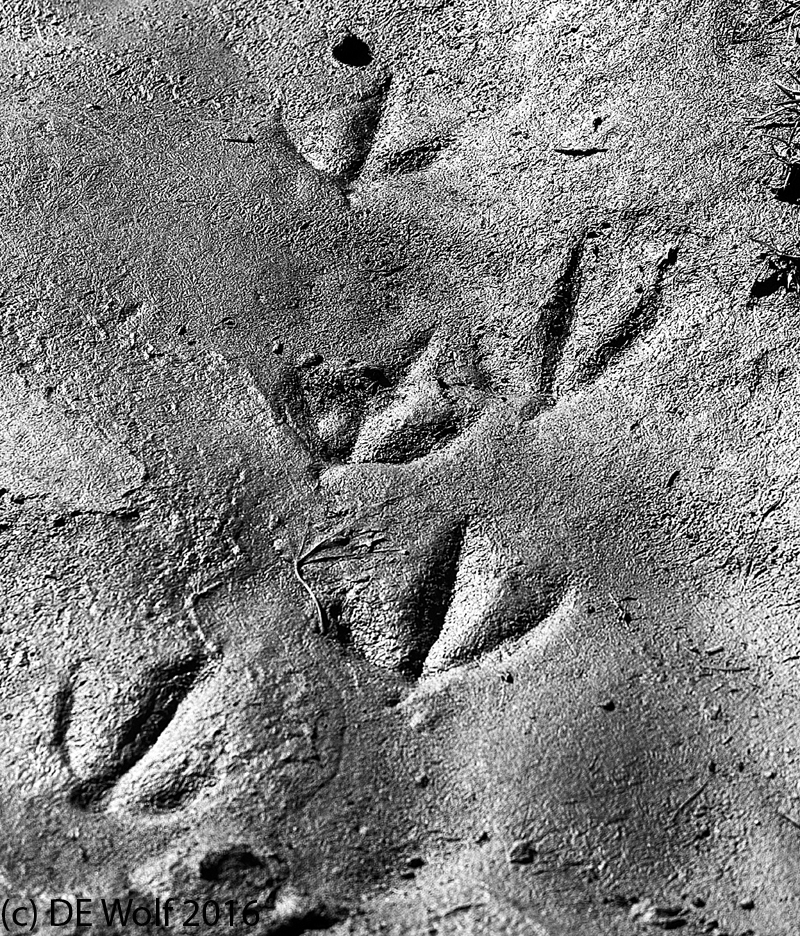In 1802 a twelve-year old farm boy, named Pliny Moody, was plowing a field in what was known as Moody Corner in South Hadley, Massachusetts, when he discovered a slab of rock which contained the first recorded dinosaur tracks ever discovered. These tracks were subsequently acquired by Dr. Elihu Dwight. They were dubbed “the tracks of Noah’s raven” after the biblical raven that Noah released to find dry land. Dr. Dwight retained possession of the tracks until around 1839, when they were acquired by Professor Edward Hitchcock for Amherst College. They can still be found there as number 16/2 in the Amherst College natural history collection.
Now, two centuries later, there are many fine examples of dinosaur tracks or footprints from all over the world. In some regards we may think of them as being akin to photographs – capturing an instant in time and holding that instant for millions of years. Indeed, in a sense, photographs pale by comparison. Dinosaur footprints or tracks are unique among fossils in that they capture a moment of life rather than a moment of death and decay. Always in these tracks is the tell-tale reptilian triple toe. And you probably are familiar with the evolutionary origin of modern birds as dinosaur if not from textbooks then from movies.
All of this came to my mind this afternoon, when I went for a first outdoor spring walk. Boy is it good to be out. Spring in New England has the alias as “Mud Season.” Indeed, all self-respecting New England houses have what is referred to as a “mud-room,” where you take off and put on your mud-caked boots. I was walking along the side of a farm field in Concord, mindful of the mud. It was the same field where I had gotten in trouble trying to photograph wild turkeys last fall- sinking ever so deeply in the grime and slush. In any event, I came upon the scene of Figure 1. These are the tracks of Canadian Geese, Branta canadensis. And you may note the delicate curvature of the between toe webbing. “Welcome to Jurassic Park.”

